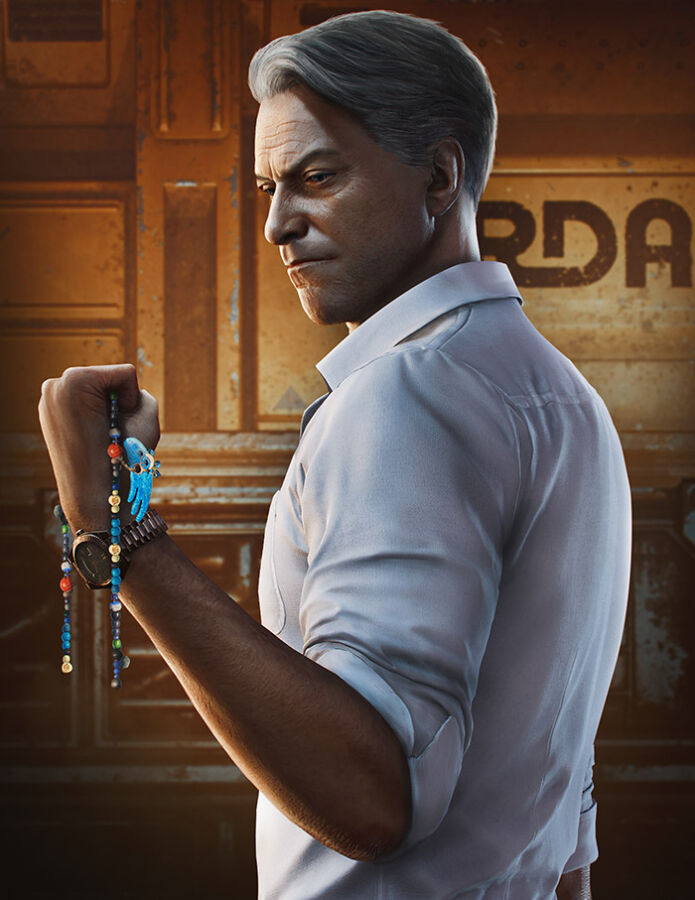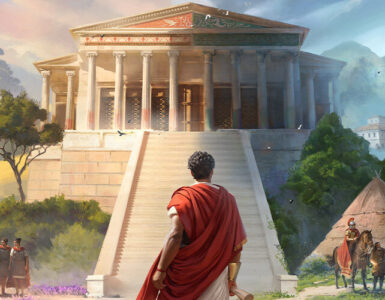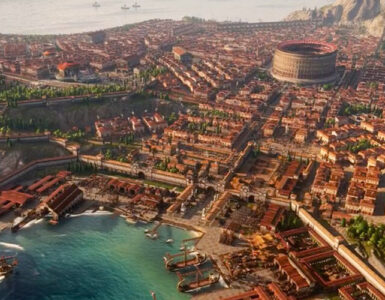The journey to Pandora takes roughly six years, and it took director James Cameron 12 years to direct a sequel to his 2009 hit movie, Avatar, which means that game publisher Ubisoft is in good company, having spent the last eight years creating an Avatar game that tells a brand new story about the Na’vi, the inhabitants of Pandora.
And less you think that the upcoming Avatar: Frontiers of Pandora game, set for release on 7 December, is one that merely shares a title with the most successful film franchise Hollywood has ever seen, Jon Landau, producer of the Avatar films will tell you otherwise.
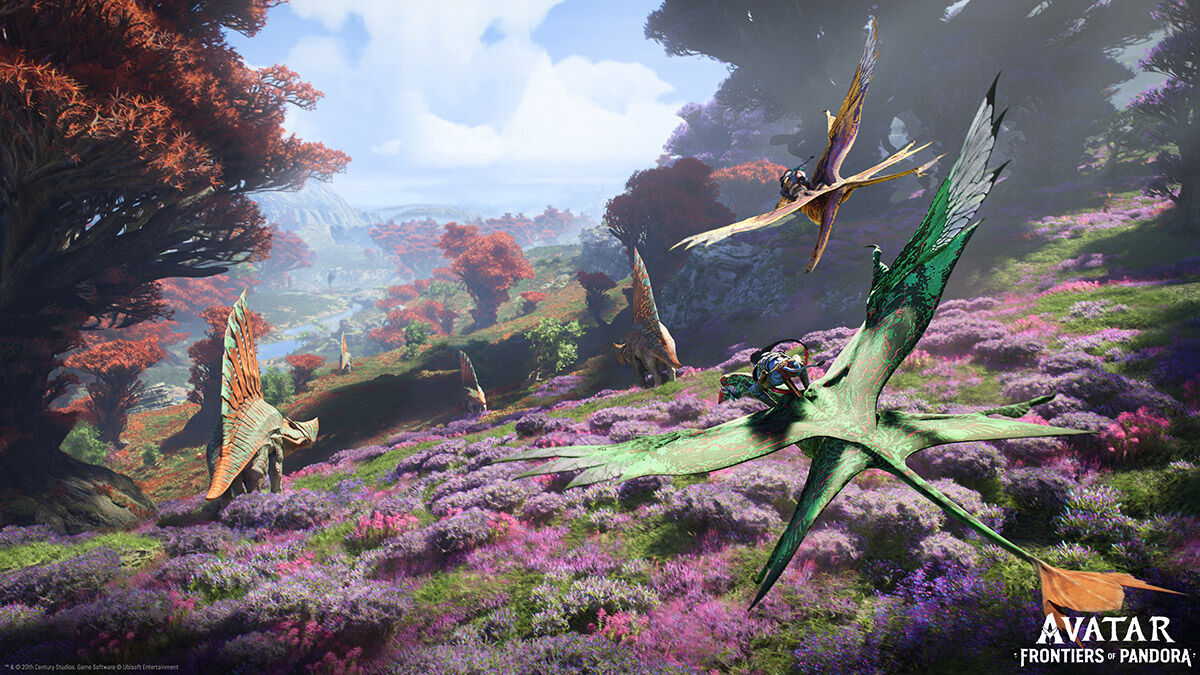
In an exclusive interview and visit to James Cameron’s Lightstorm Entertainment studios in Manhattan Beach, California, the long-time partner of Cameron, who started working with the famed director in 1997’s Titanic recounted the effort in finding the right game developer for the intended Avatar game, and why the team eventually picked Ubisoft’s Massive Entertainment.
“It was our choice of what company to work with, and we picked Massive because they showed us early glimpses at what they could do with our world with their Snowdrop engine. And that was good, but technology is never the answer. It’s the people that are the answer. And we met in Malmo, Sweden, where I went over there and saw the facility, talked to all the people who are going to be on the team. They made trips here [to LightStorm Entertainment] too. And it was after meeting the people, and realizing that we really had a common vision for what the game should be, and that we believed in the people did we commit to Massive. Our commitment and promise to them was that we would not interfere with the game being great,” explained the award-winning 63-year-old.
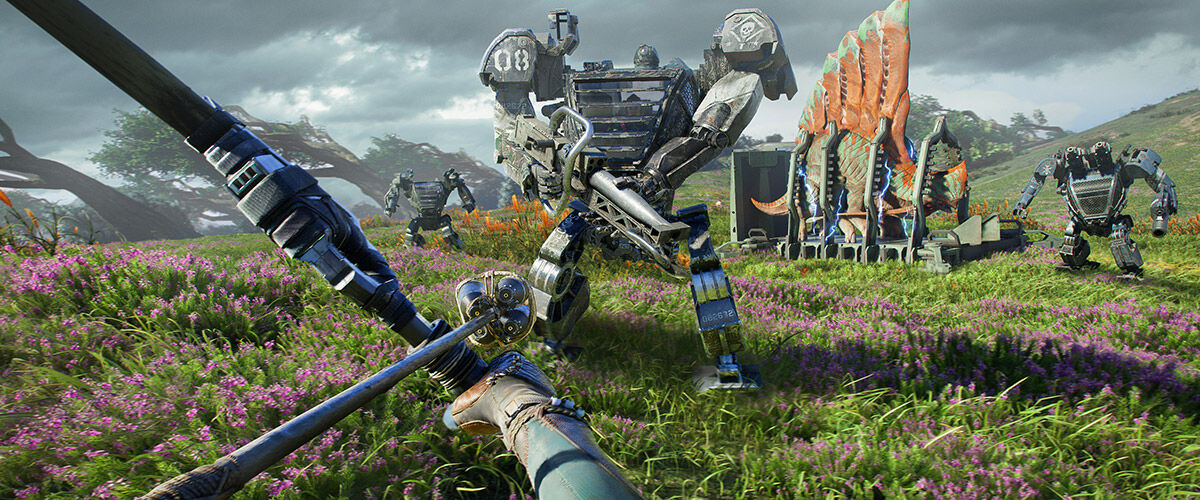
And it is a relationship that benefits both, as just as the game borrows from the films, Landau is not dismissing the possibility that what appears in the game might eventually find its way into the three sequel films that are currently in production and development.
“We would be the stewards of our world and we would contribute along the way to make sure that everything was consistent with how we viewed it. And to me, that means the challenge was, we’re going to a new place. We’re going to the western frontier. We’d never seen that in Avatar, but it becomes a part of our canon,” noted Landau.
“We are meeting new clans that didn’t exist, that have different traditions, different cultures. We are introducing new creatures, and each one of those to us. If it’s good enough for the game, that’s not good enough, it needs to be good enough that we say if we wanted to move it into the movie, or future movie we could because it’s consistent with our world, and it’s consistent with our vocabulary.”
The end result? Avatar: Frontiers of Pandora will mark the franchise debut of 85 harvestables, 75 plants, 46 creatures, 4 AMP suits, and one Wyvern or RDA aerial unit that were developed just for the game, and will be added to the official Pandorapedia encyclopedia of creative assets used by the filmmakers.
The Story & New Characters in Avatar: Frontiers of Pandora
For Avatar: Frontiers of Pandora, the development team wanted to set the stage for an amazing and emotional story, which means a departure from the movie’s premise of having a human inhibit a clone body of a Na’vi. Instead, the player will play a Na’vi – not as a human or a human in an avatar, but as a Na’vi raised in a human environment. The RDA (Resources Development Administration) had previously set up a “TAP” Ambassador Program that was running parallel to what Dr. Grace Augustine (Sigourney Weaver) was doing in the first Avatar. Here, the facility is run by the game’s main antagonist, John Mercer and assisted by Lieutenant Angela Harding and so there’s no confusion, think of Harding as the Colonel Miles Quaritch (Stephen Lang) equivalent in the franchise.
The “TAP” program was set out to basically reprogram and school Na’vi kids to become “ambassadors”, or tools for the RDA. When the player eventually breaks out of the human facility and step into Pandora for the first time, the game will explore what it means to be a Na’vi for both the player and protagonist.
Upon arriving at the Resistance HQ, the player will be introduced to a group of humans and Na’vi working together to fight off the RDA. Two new non-playable characters introduced are Na’vi So’lek, who’s highly motivated to take revenge on the RDA, and human Priya, the radio operator who liaises with the player throughout the game’s progression.
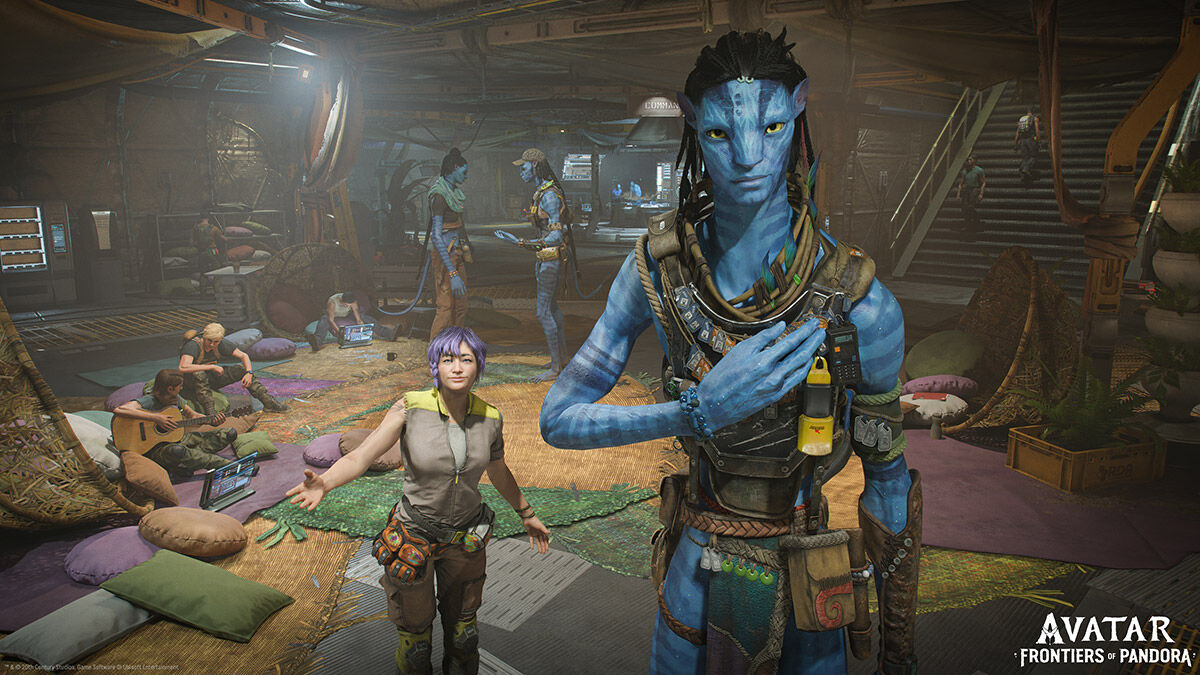
The Western Frontier
Avatar: Frontiers of Pandora will also introduce three new distinct regions comprising of the Kinglor Forest, Upper Plains and the Clouded Forest. Massive wanted to kick off the game with something that delivers on fantasy fulfillment for players who liked the first Avatar movie’s lush rainforest, and transports the player into that familiar space to experience it for themselves first hand. The Kinglor Forest sets out to deliver just that, with dynamic and reactive environments, and yes it even has the swirly orange plant ‘Helicoradian’ as seen in the first movie, when Jake Sully touches it and things go horribly wrong after that chain reaction.
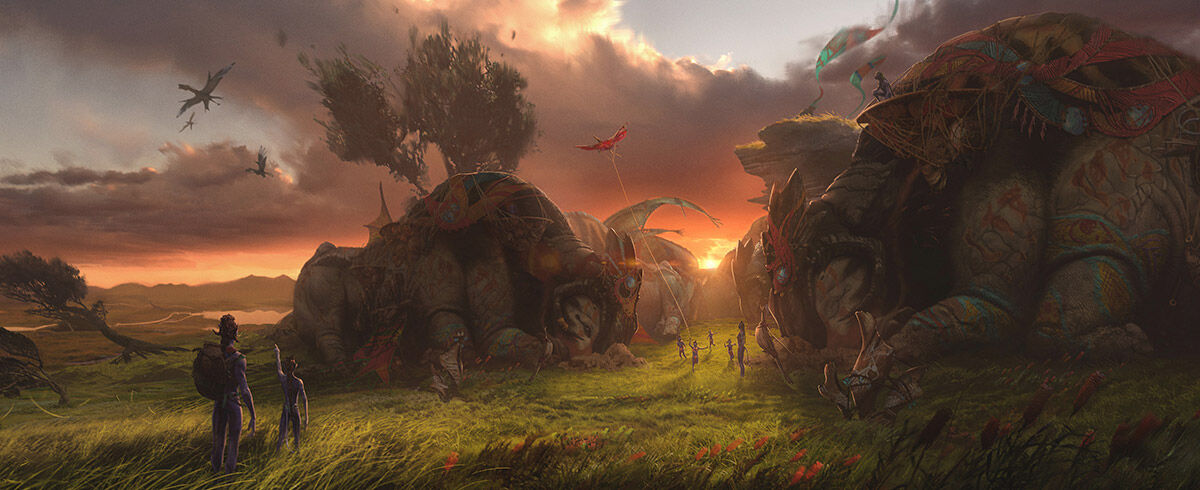
As the game moves on to the next wind-swept region, the Upper Plains, the vast open environment opens up a different set of gameplay opportunities for the player. Each landmark and creature stands out more, and there is a strong use of wind elements infused into the gameplay for this region.
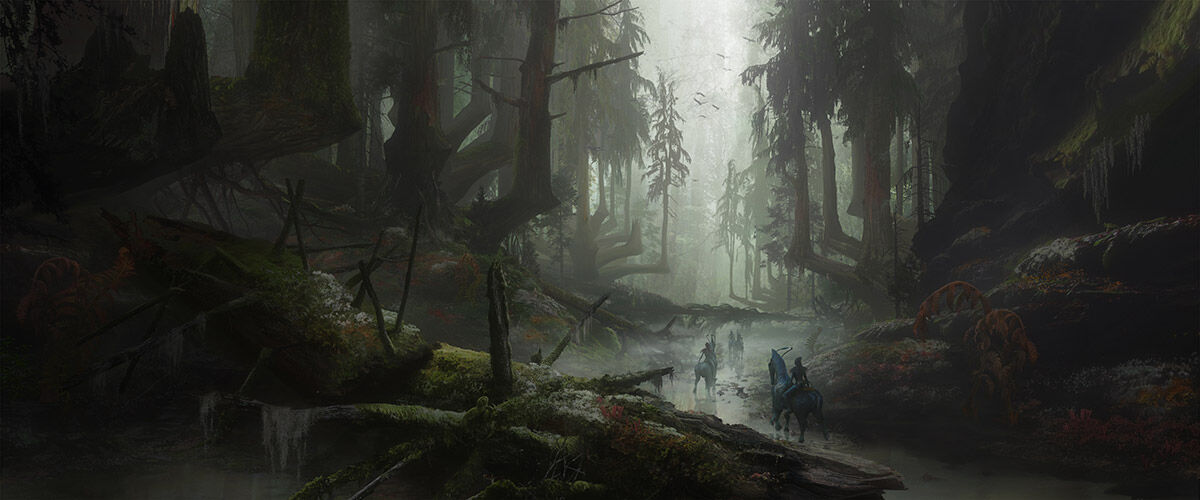
The Clouded Forest is inspired by temperate rainforests, with a foggy mysterious vibe. There is a lot of themes about things being hidden in this region, both in nature with wildlife and even with the story of the Kame’tire clan. The region has a very different soundscape, which is a lot more quiet, and the player would have to act differently when hunting. It is foggy most of the time too, which sets a different mood from the previous two colourful and vibrant regions.
The Soundtrack
Work on the game’s soundtrack started about four years ago, when Massive’s audio director Alex Rivière started collaborating with LightStorm and John Landau directly. The team did a deep analysis of James Horner’s work, so as to stay true to his original vision for music and to expand on it. In order to achieve that, award-winning composer Pinar Toprak (Captain Marvel, 2019 and Fortnite) was brought on board and as a massive (heh) Avatar and James Horner fan, it was clear that her expertise in the movie and gaming field would be perfect for the game. The team recorded and mixed well over 200 minutes worth of music, performed by over 200 musicians from all around the world.
Have a taste of the game’s soundtrack in the special “Behind the Music” featurette below.
The Costume Design
When you think of the Na’vi, you would think their dressing comprisessimple loincloths and various elements of tribal accessories but the team at Massive dove right in and designed three distinct costumes for the three main clans across the Western Frontier within the game. As you can see in the concept art, from left to right – the sophisticated, stylish Aranahe clan of the Kinglor Forest region, the mysterious, hidden Kame’tire clan of the Clouded Forest region, and the nomadic, boisterous Zeswa clan of the Upper Plains region.
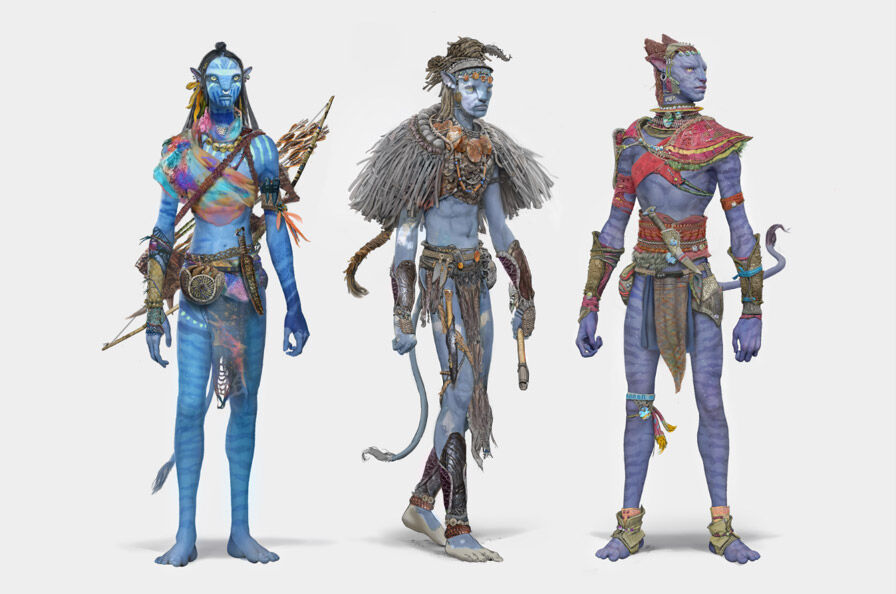
Even the protagonist’s outfits evolve signification throughout the game, as the player progresses from escaping the TAP facility (in T-shirt and military slacks) to match the respective clans’ aesthetics in each of the three main regions of the Western Frontier. Character customisation is a big part of the game, and Avatar: Frontiers of Pandora features a complex gear system, which consists of five main gear slots. Each of those gear slots has multiple layers, where the player can equip and switch between them on the fly. When designing this system, Massive needed to make sure that all those pieces worked together because the player can customize every single piece to pair up with every other piece. On top of that, there is a separate crafting system with different materials and colours to throw into the mix. As a result, the team had created hundreds of different variations that the players can equip and customize and make their character their own.
Another interesting element is the inclusion of the Na’vi songcord into the game. A Na’vi songcord is basically the story of the life of the character who wears it and each individual woven component bead trinket is used for recounting information, stories, mythology and major moments. It is used as a tactile representation of an individual’s own personal or family/clan history. Neytiri’s songcord can be seen in Avatar: The Way of Water when she sings a part of her personal songcord at the beginning and end of the film.
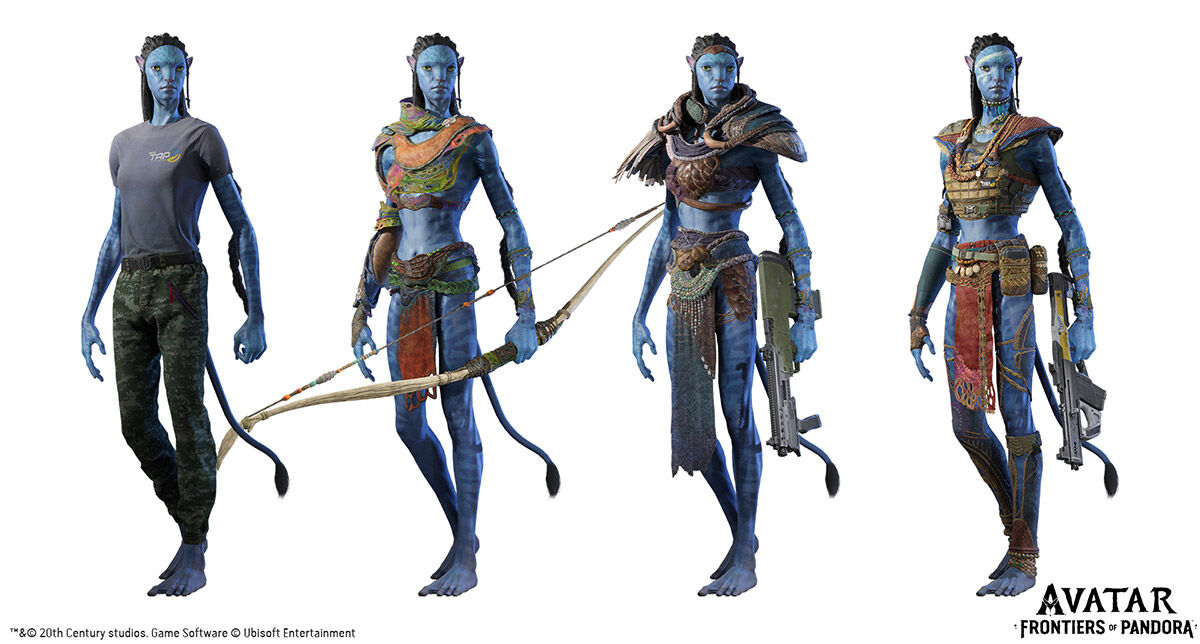
Massive worked very closely with LightStorm to transfer this important item into a gameplay feature, so as the player progresses through the story, the player will grow their own songcord. As the game is in first person perspective, the player will be able to see the songcord progression at all times, looped around their character’s left forearm (as can be seen in the second to four character renders above). This was the main reason why the songcord is on the character’s left arm instead of around the waist as seen in the movies. Players will then be able to see their story progress on the screen with every significant element done in the game story, it can be seen reflected on the left arm as a gameplay feature.
And it is these additions to the lore that Magnus Jansen, Creative Director at Ubisoft’s Massive Entertainment is most proud of, as it serves as a great introduction to anyone who hasn’t seen either movies, and feeds into the foundation of the series for fan who have caught the movies many times.

“It’s a new story compared to movies and that means that even if you haven’t seen the movies, you learn and take the steps and progress and get your bearings at the same time, as to play a character and you don’t have to have seen the movies,” notes Jansen.
“It’s a journey of discovery of becoming Na’vi, of learning your past about fighting for your home against the invaders. And that’s a universal story and it’s accessible to everyone regardless of if you’re a superfan, where you’ll notice all the little details that you know if you’ve seen all the movies a hundred times. But if you haven’t even seen the movies once, you’ll just have a fantastic adventure on Pandora.”
Avatar: Frontiers of Pandora releases on 7 December 2023 on PlayStation 5, Xbox Series X|S and PC.

